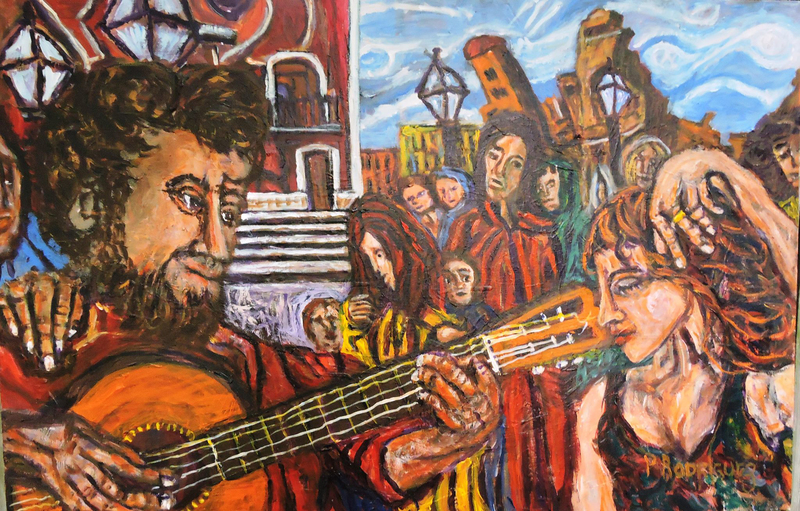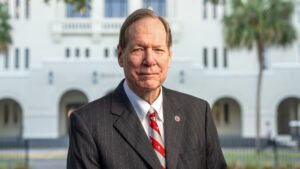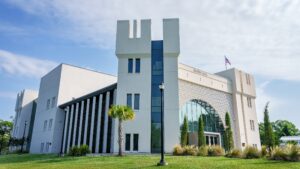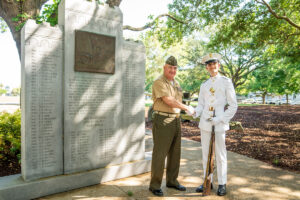
While working as a counselor to Spanish-speaking immigrant families in the Charleston area for twelve years, Marina López was moved by the stories she heard: stories that told of struggles and despair but also revealed hopes and dreams.
“During this time, I observed a change in the way immigrants were portrayed in the public discourse and media outlets,” said López. “These public ideas became more and more negative and stereotypical and contrasted sharply with the diversity of experiences I was exposed to in my daily practice with Latino families.”
Determined to record these personal accounts and highlight their significance, López earned a master’s degree in library and information science from the University of South Carolina and began exploring ways to properly convey the experiences of Latinos in the Lowcountry. After López met Citadel history professor Kerry Taylor, Ph.D., at an oral history workshop, they embarked on a documentation project that would span several years and culminate in “Las Voces del Lowcountry.”
“My initial goal was to find a way to document these stories that challenged the mainstream narratives,” said López. “I came across oral history and thought it was a great tool to document the life of the community and that even if the present was gloomy, someday, somebody interested in learning about the lives of the Latinos in the Lowcountry could use these recordings to tell a more accurate story. Early on, I understood that for these stories to have any impact they needed to be deposited and made accessible to the public.”
By documenting the varied experiences of local Latino immigrants using their own words, “Las Voces” attempts to deepen awareness and to enrich public discussions regarding relevant policy issues such as immigration, education and employment. Created through the auspices of The Citadel Oral History Program and available online through the Lowcountry Digital History Initiative, “Las Voces” is a bilingual digital exhibition that revolves around oral history interviews conducted from 2012 to 2014.
“Between 2000 and 2010, there was an approximately 160 percent spike in the South Carolina Latino population,” said Taylor. “We recognize that this is a significant development and want to know about the experiences of people whose lives are often hidden to mainstream life in Charleston. The exhibit is a way of contextualizing the interviews to provide some background for understanding the significance of the narratives and to present the stories, all of which are very powerful and deal with a range of very basic human experiences, including fear.”
The mostly-Spanish interview recordings and transcripts, as well as English translations, are supplemented with photographs, historic documents and artistic images that speak to Latino immigrants’ many achievements and contributions to the region’s cultural and economic life, as well as their struggles with poverty and discrimination. In 2013, The Citadel Oral History Program received funding from The Humanities Council of South Carolina to support the recording of additional interviews and to sponsor community programs to encourage open and civil dialogue.
“I think that if we really want to know somebody else’s experience we need to spend more time listening,” said López. “In oral history, we seek to collect, preserve and share these narratives. On the other hand, as oral historians, we are particularly interested in understanding how these personal narratives speak about and intersect with broader themes such as education, employment and community building.”
López and Taylor’s initial efforts focused on the experiences of working-class immigrant families, most of whom were from Mexico, but they quickly expanded to include interviews from the diverse Latino communities of the Lowcountry and Latinos working on art, community organizations and immigrant rights. The interviews highlight three themes: the experiences of working class immigrants and their children, the impact of immigration policies on their lives, and the emergence and development of Latino social and political organizations.
“Part of what we are doing is taking a snapshot of the Lowcountry and the development of its Latino community at this moment of emerging leadership and voices that have not yet manifested themselves within formal political structures but will in the next few years,” said Taylor. “We thought it was an important moment to capture, from a historical perspective.”
While student involvement with creating “Las Voces” mainly included Citadel and College of Charleston graduate students, six Citadel cadets worked on transcribing and translating interviews, and one cadet of Puerto Rican descent conducted several of the interviews in Spanish.
This summer, “Las Voces” will expand its visual component with a full-scale multimedia art exhibition. Called “Los Ecos,” this next phase of the project features 20 Latino artists from South Carolina who have been commissioned to listen to selections from the interviews and interpret them through visual art. Curated by Palmetto Luna, a nonprofit organization that advocates for Latino artists and culture in South Carolina, “Los Ecos” will open this May at the Columbia Museum of Art and then travel to galleries around the state. A $25,000 grant from the Donnelley Foundation was used to plan the exhibit, and an additional Humanities Council of South Carolina grant funded the exhibit’s catalog and website.
“A visitor to the exhibit will see the artwork, be able to listen to the interview clip that inspired it, and then read or perhaps listen to a translated version,” said Taylor. “The idea is that the artists are echoing the voices that they are listening to. The goal of both “Las Voces” and “Los Echos” is to capture the power of their stories.”
For more information on The Citadel Oral History Program, please click here.

 The Citadel Board of Visitors reelects chair
The Citadel Board of Visitors reelects chair Baker School of Business extends prestigious AACSB accreditation
Baker School of Business extends prestigious AACSB accreditation Cadet Vaughn Daughenbaugh wins 2025 Star of the West competition
Cadet Vaughn Daughenbaugh wins 2025 Star of the West competition

